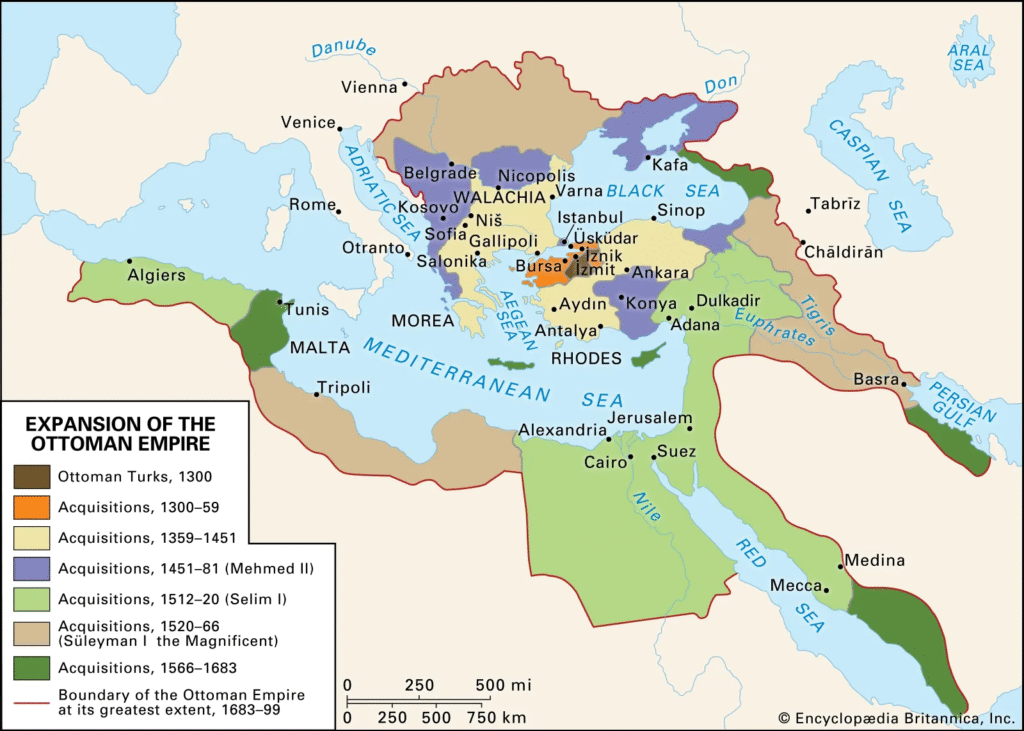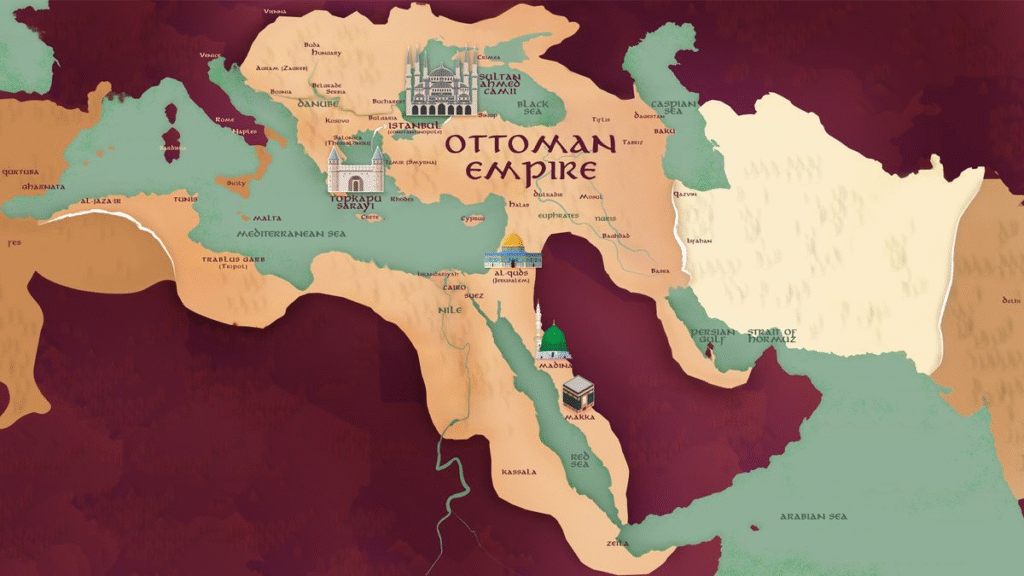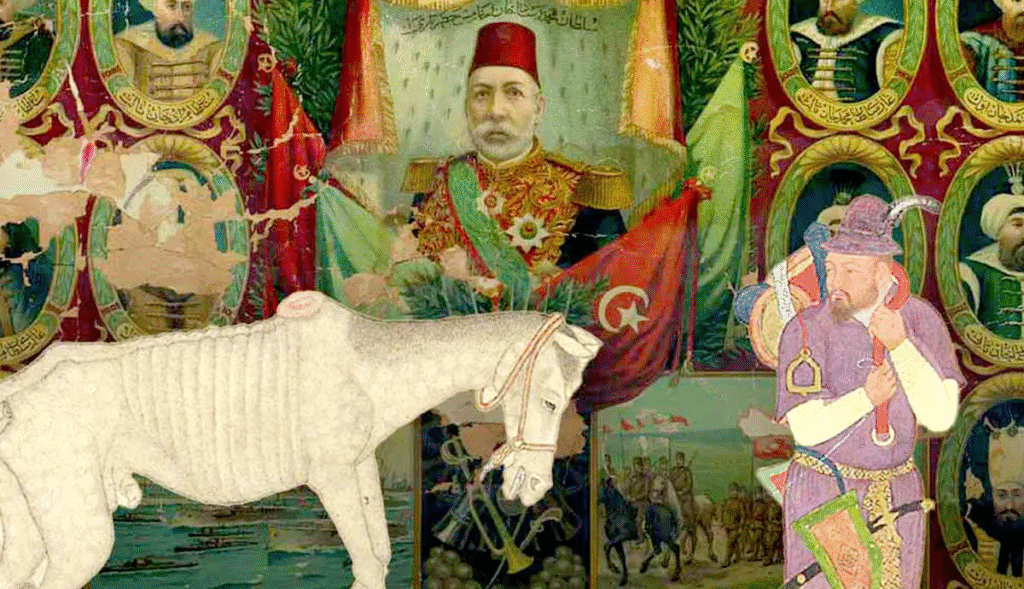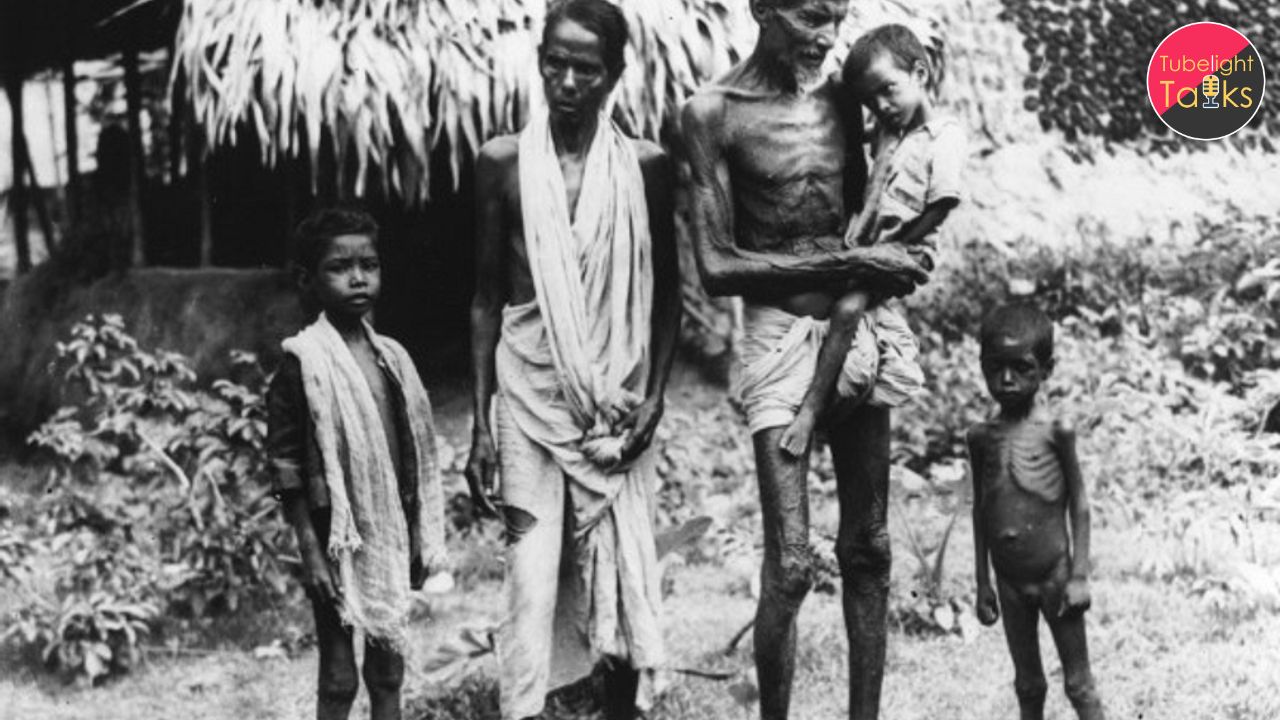When we gaze upon the magnificent domes of the Blue Mosque or recount the tales of brilliant sultans, we remember the Ottoman Empire for its architectural splendor and military genius. For six centuries, its influence stretched across three continents, a testament to its power and sophisticated administration. Yet, beneath the veneer of imperial glory lies a more complex and methodical story of expansion, one not of chaotic battles, but of a calculated system that weaponized the most fundamental aspects of human life. This is the story found not in grand chronicles of victory, but in the quiet, meticulous ledgers of the conquerors.
After the Walls Fell: A Protocol for Conquest
On May 29th 1453 the Ottoman Empire had breached the walls of Constantinople. For the citizens within, this was not the beginning of a chaotic sack, but the implementation of a precise and well-documented imperial procedure. Ottoman military manuals and administrative records reveal that what followed was not random violence, but a systematic “harvesting protocol” designed for maximum efficiency and psychological impact.
The moment a city fell, a methodical process of sorting the population began. This was not about eliminating immediate military threats; it was about resource management. Adult males were often systematically executed, not in the heat of battle, but in organized fashion after surrender. This practice aimed to quell any future resistance before it could begin.

However, for women and children, a different fate awaited. They were subjected to what Ottoman documents term “population processing.” In the smoldering public squares of their conquered homes, families were torn apart as officials categorized individuals based on their perceived value to the empire. This public sorting was a deliberate act of psychological warfare, designed to shatter the morale of any survivors and send a chilling message to neighboring territories. The empire understood that fear, when systematically applied, could be its most potent weapon.
From Human to Commodity: The Economics of Expansion
The Ottoman approach to conquest was as much an economic enterprise as a military one. The categorization of women and children was executed with bureaucratic precision. Women were typically divided into groups by age. Young women, often between 14 and 25, were considered the most valuable and were meticulously recorded in imperial ledgers. Records from the Constantinople conquest, for instance, list thousands in this category, each assigned a numerical designation and a market value as if they were livestock or bolts of silk.
A second category might include women deemed suitable for manual labor, while a third, often older women, could face the same fate as the men, considered an unjustifiable expense to transport and feed. Children, too, were seen as a resource. Young boys were sometimes destined for the Devşirme system, a levy where they were taken from their families to be converted and trained as elite soldiers or administrators for the empire. Young girls, however, entered different “formation programs,” preparing them for roles within the vast and complex imperial household and social structure.

This entire process was supported by a sophisticated economic infrastructure. Slave markets in major Ottoman cities like Bursa and Ankara were thriving centers of human trafficking. The empire’s record-keeping was immaculate.
Also Read: The Power Behind Space Exploration: How Rocket Engines Work
Surviving ship manifests list their human cargo with chilling detachment, alongside spices, textiles, and precious metals. A typical entry might note the number of “females,” their age range, and their physical condition. This transformation of human beings into quantifiable assets was a cornerstone of the empire’s economic and military success. The incentive structure rewarded commanders not just for territory gained, but for the number and quality of captives acquired, creating a self-perpetuating cycle of conquest and exploitation.
The Architecture of Control: Law, Identity, and Submission
The systematic subjugation of conquered populations was not merely an informal practice; it was enshrined in the empire’s legal framework. This legal codification provided a veneer of legitimacy to practices designed to break the will and erase the identity of the conquered.
One of the most effective tools was the transformation of a woman’s identity. Upon capture, her name was often changed to a Turkish one, severing the first link to her past. Religious conversion was mandatory, enforced through ceremonies that required public renunciation of her former faith. These acts were designed to methodically dismantle a person’s cultural and spiritual identity, leaving them adrift and dependent on their new masters.
The empire established specialized “conversion centers” in major cities, facilities designed for this process of industrial-scale psychological re-engineering. These programs were intended to create complete subservience and ensure that any children born from these circumstances would be raised with undivided loyalty to the empire. The systematic separation of mothers from children was another calculated tactic. By breaking the most fundamental human bond, the system ensured that future generations would have no memory of their ancestral heritage, culture, or family connections, effectively creating a new populace born to serve the state.
A Perpetual Harvest: The Tribute System and Border Raids
The acquisition of people was not limited to the immediate aftermath of a major conquest. It was a continuous process, essential for feeding the empire’s administrative, military, and social systems. The aforementioned Devşirme levy, often remembered for taking boys, also systematically collected girls from Christian families in the Balkans. While the boys might aspire to positions of power, the girls were absorbed into a different part of the imperial machine, their paths leading to domestic servitude or the secluded imperial harems.

Beyond this formalized tribute, the empire conducted regular and highly organized raids into neighboring territories.These were not random incursions but planned military operations, often timed seasonally like an agricultural harvest. Ottoman scouts would map villages, identify valuable targets, and plan routes to maximize captures while minimizing risk.
The psychological impact on the populations living under this constant threat was profound and lasting. These communities lived in a state of perpetual fear. The constant danger of abduction reshaped their cultures, traditions, and even their social structures. The terror instilled by these practices became a defining feature of their existence, a dark legacy of living in the shadow of a powerful empire.
Reconciling with the Archives
The Ottoman Empire was, without question, one of history’s most significant and enduring civilizations. Its contributions to art, science, and governance are undeniable. However, a complete understanding of its history requires a willingness to look beyond the celebrated achievements and confront the more complex and uncomfortable truths preserved in its own meticulous archives.
The records of ledgers, transport ships, and legal codes reveal a system of conquest that was deeply organized, economically motivated, and psychologically sophisticated. They show us that the expansion of the empire was built not only on the strength of its armies but also on a calculated and sustained system of human exploitation. To study these documents is not to diminish the empire’s accomplishments, but to gain a fuller, more nuanced understanding of the true cost of its creation and the enduring resilience of the people it absorbed. History, in its entirety, is rarely simple, but it is always instructive.
The Strive for material wealth is the doom of us all
The relentless pursuit of power and dominance that fuels historical atrocities is seen as a symptom of a deeper ignorance caused by the ruler of this world Kaal Brahm(Satan). Tatvagyaan, or true spiritual knowledge, posits that our material world is a realm intentionally designed for suffering: a grand illusion or trap.
According to the teachings of Sant Rampalji Maharaj, only a Satguru (a true spiritual master) can illuminate this reality and provide the genuine path to liberation. By imparting this profound wisdom, the Satguru enables a soul to see beyond worldly desires, understand the root cause of its pain, and finally attain true salvation (Moksha). Once this spiritual truth is widely understood, humanity can rise above the base instincts that lead to such tragedies, leaving them behind as relics of an unenlightened past.










